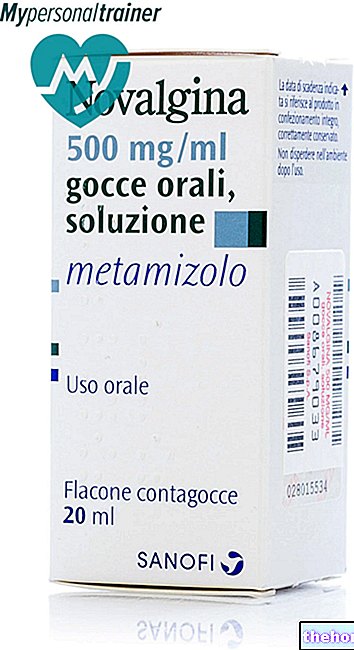Active ingredients: Clotrimazole
Gyno-Canesten 2% vaginal cream
Gynocanesten package inserts are available for pack sizes:- Gyno-Canesten 2% vaginal cream
- Gyno-Canesten 100 mg vaginal tablets
Why is Gynocanesten used? What is it for?
Gyno-Canesten contains clotrimazole, which is an antifungal (antifungal) for gynecological use, i.e. it is able to inhibit the growth of organisms such as fungi and yeasts.
Gyno-Canesten vaginal cream is used for the treatment of localized symptoms resulting from vulvovaginal infections caused by candida previously diagnosed by the doctor. These symptoms include itching, leucorrhoea (whitish vaginal discharge), redness and swelling of the vaginal mucosa, burning when passing urine.
The product is intended for use by adults and adolescents over 12 years.
Talk to your doctor if you do not feel better or if you feel worse after 7 days of treatment
Contraindications When Gynocanesten should not be used
Do not use Gyno-Canesten
- if you are allergic to clotrimazole or any of the other ingredients of this medicine (listed in section 6).
Precautions for use What you need to know before taking Gynocanesten
Talk to your doctor or pharmacist before using Gyno-Canesten if:
- have already suffered from these disorders in the past (recurrence of mycosis)
- have fever (38 ° C or higher), lower abdominal pain, back pain, foul-smelling vaginal discharge, nausea, vaginal bleeding and / or shoulder pain.
The use, especially if prolonged, of products for cutaneous use (on the skin), can cause sensitization phenomena; in this case, stop the treatment and consult your doctor or pharmacist.
Avoid contact with eyes. Do not ingest.
Avoid vaginal intercourse while using this medicine, as the infection could be passed on to your partner. Gyno-Canesten cream can reduce the efficacy and safety of latex products, such as condoms and diaphragms, when applied to the genital area (women: labia and areas adjacent to the vulva; men: foreskin and glans penis). The effect is temporary and occurs only during treatment (see also "How to use Gyno-Canesten").
Interactions Which drugs or foods can modify the effect of Gynocanesten
Tell your doctor or pharmacist if you are taking, have recently taken or might take any other medicines.
Tell your doctor in particular if you are being treated with oral sirolimus or tacrolimus (used to prevent organ transplant rejection) as Gyno-Canesten can increase the levels of sirolimus and tacrolimus in your blood. In this case, your doctor will monitor his condition carefully.
Warnings It is important to know that:
Pregnancy and breastfeeding
If you are pregnant or breast-feeding, think you may be pregnant or are planning to have a baby, ask your doctor or pharmacist for advice before using this medicine.
Pregnancy
There are limited data on the use of clotrimazole in pregnancy. As a precautionary measure, avoid the use of Gyno-Canesten in the first trimester of pregnancy.
During pregnancy, use Gyno-Canesten vaginal tablets, as they can be used without the applicator (see "How to use Gyno-Canesten").
Feeding time
Stop breast-feeding during treatment with Gyno-Canesten, as the medicine may pass into breast milk.
Driving and using machines
The medicine has no or negligible influence on the ability to drive or use machines or its influence is negligible.
Gyno-Canesten cream contains cetostearyl alcohol
It can cause local skin reactions (e.g. contact dermatitis).
Dose, Method and Time of Administration How to use Gynocanesten: Posology
Always use this medicine exactly as described in this leaflet or as directed by your doctor or pharmacist. If in doubt, consult your doctor or pharmacist.
Unless otherwise prescribed, use Gyno-Canesten cream daily, i.e. in the evening, for 3 consecutive days, introducing the contents of an applicator (about 5 g) deeply into the vagina.
If necessary, you can carry out a second 3-day treatment.
If your doctor has told you that you have Candida vulvitis or balanitis, continue the treatment for 1-2 weeks.
In order to avoid reinfection, especially in the presence of Candida vulvitis or balanitis, the partner must be treated locally (glans and foreskin) at the same time.
If necessary, you can repeat the treatment. However, recurrent infections may indicate an underlying disease. If symptoms recur within two months, consult your doctor.
Warning: do not exceed the indicated doses without medical advice.
Do not use tampons, douches, spermicides or other vaginal products while using Gyno-Canesten.
Avoid vaginal intercourse while using this medicine, as the infection could be passed on to your partner and the efficacy and safety of latex products, such as condoms and diaphragms, may be reduced (see also "Warnings and precautions" ).
During pregnancy, use Gyno-Canesten vaginal tablets, as they are inserted without an applicator (see also "Pregnancy and breastfeeding").
This medicine is intended for use by adults and adolescents over 12 years.
Duration of treatment
Treatment should be properly started and ended in the inter-menstrual period.
Consult your doctor if the disorder occurs repeatedly or if you notice any recent changes in its characteristics.
If symptoms persist for more than 7 days, consult your doctor.
Take the supine position (lying with the belly upwards), with legs slightly bent. Insert the applicator deeply into the vagina.
How to use
- First pull the plunger out of the disposable applicator until it stops.
- Open the tube. Insert the disposable applicator into the latter and hold it firmly. Fill the applicator by exerting gentle pressure on the tube.
- Remove the disposable applicator, introduce it as deeply as possible into the vagina (it is advisable to lie down) and empty it by means of regular and continuous pressure on the piston.
- Remove the applicator and then throw it away. Furthermore, it is recommended to apply Gyno-Canesten cream externally on the perineal area, up to the anal region. Apply the cream in a thin layer 2-3 times a day and penetrate the face with a gentle massage.
The applicator should be used only once and then thrown away, in order to avoid possible reinfections.
Health education notes
It is important that you follow some personal hygiene rules for prevention purposes:
- avoid wearing too tight clothing;
- avoid the use of nylon or synthetic fiber underwear: preferably use cotton or natural fiber clothing;
- avoid the use of soaps for intimate hygiene with an alkaline pH: we recommend the use of detergents with an acid pH (pH 5) to respect the normal acidity of the vaginal environment;
- avoid the use of vaginal douches which can alter the vaginal environment and therefore favor the establishment of infections;
- if you use tampons, change them frequently and avoid using them during the night; however, it is preferable to use external sanitary pads.
Overdose What to do if you have taken too much Gynocanesten
If you use more Gyno-Canesten than you should
No risk of acute intoxication is anticipated since it is unlikely to occur after a single vaginal or cutaneous application of an overdose (application over an extended area under conditions favorable to absorption) or by inadvertent oral intake. There is no specific antidote. In case of accidental ingestion / intake of an overdose of Gyno-Canesten, notify your doctor immediately or go to the nearest hospital.
If you forget to use Gyno-Canesten
Continue the treatment as per the recommended dosage.
If you have any further questions on the use of Gyno-Canesten, ask your doctor or pharmacist.
Side Effects What are the side effects of Gynocanesten
Like all medicines, this medicine can cause side effects, although not everybody gets them.
The following side effects have been reported with Gyno-Canesten, the frequency of which is not known:
Immune system disorders: allergic reaction, which can occur with transient loss of consciousness (syncope), low blood pressure (hypotension), difficulty in breathing (dyspnoea), hives.
Reproductive system and breast disorders: peeling of the genital area, itching, rash, swelling caused by fluid accumulation (edema), redness of the skin (erythema), discomfort, burning, irritation, pelvic pain, vaginal bleeding.
Gastrointestinal disorders: abdominal pain.
Compliance with the instructions contained in the package leaflet reduces the risk of undesirable effects.
Reporting of side effects
If you get any side effects, talk to your doctor or pharmacist. This includes any possible side effects not listed in this leaflet. You can also report side effects directly via the national reporting system at https://www.aifa.gov.it/content/segnalazioni-reazioni-avverse. By reporting side effects you can help provide more information on safety. of this medicine.
Expiry and Retention
Keep this medicine out of the sight and reach of children.
Do not use this medicine after the expiry date which is stated on the package. The expiry date refers to the last day of that month. The expiry date refers to the product in intact packaging, correctly stored.
Do not use Gyno-Canesten 2% cream 3 months after first opening.
Do not throw any medicines via wastewater or household waste. Ask your pharmacist how to throw away medicines you no longer use. This will help protect the environment.
It is important to have the information about the medicine available at all times, so keep both the box and the package leaflet.
Composition and pharmaceutical form
What Gyno-Canesten contains
- The active ingredient is clotrimazole. 5 g of vaginal cream contains 100 mg of clotrimazole.
- The other ingredients are: sorbitan monostearate, polysorbate 60, cetyl palmitate, cetostearyl alcohol, octyldodecanol, benzyl alcohol, purified water.
What Gyno-Canesten looks like and contents of the pack
Gyno-Canesten comes in the form of a vaginal cream for gynecological use. The package content is 30 g with 6 disposable applicators.
Source Package Leaflet: AIFA (Italian Medicines Agency). Content published in January 2016. The information present may not be up-to-date.
To have access to the most up-to-date version, it is advisable to access the AIFA (Italian Medicines Agency) website. Disclaimer and useful information.
01.0 NAME OF THE MEDICINAL PRODUCT
GYNO-CANESTEN
02.0 QUALITATIVE AND QUANTITATIVE COMPOSITION
GYNO-CANESTEN 2% vaginal cream
5 g of vaginal cream contains:
Active ingredient: clotrimazole 100 mg
GYNO-CANESTEN 100 mg vaginal tablets
One vaginal tablet contains:
Active ingredient: clotrimazole 100 mg
For the full list of excipients, see section 6.1.
03.0 PHARMACEUTICAL FORM
Vaginal cream
Vaginal tablet
04.0 CLINICAL INFORMATION
04.1 Therapeutic indications
Gyno Canesten vaginal cream and vaginal tablets are used for:
- treatment of localized symptoms such as itching, leucorrhoea, redness and swelling of the vaginal mucosa, burning when passing urine if these symptoms are consequent to vulvovaginal infections caused by candida previously diagnosed by the doctor.
04.2 Posology and method of administration
The tablets or cream should be introduced as deeply as possible into the vagina in the evening and for this purpose the patient will have to assume the supine position with slightly bent legs. Treatment should be properly started and ended in the inter-menstrual period.
If symptoms persist for more than 7 days, it may be a condition that requires medical treatment.
If necessary, the treatment can be repeated. However, recurrent infections may indicate an underlying disease, such as diabetes or HIV infection. If symptoms recur within 2 months, the patient should seek medical attention.
Do not use tampons, douches, spermicides or other vaginal products while using the product.
During the use of the product it is recommended to avoid vaginal intercourse, because the infection could be transmitted to the partner.
During pregnancy use vaginal tablets, inserting them without applicator.
The product is intended for use by adults and adolescents over 12 years.
GYNO-CANESTEN 2% vaginal cream
Unless otherwise prescribed, it is administered daily, ie in the evening, for 3 consecutive days, introducing the contents of an applicator (about 5 g) deeply into the vagina (see below). If necessary, a second 3-day treatment can be carried out.
Application procedure:
The applicator should be used only once and then thrown away in order to avoid possible reinfection.
1. First pull the plunger out of the disposable applicator until it stops.
2. Open the tube. Enter the "apply-
disposable tore in the latter and keep it firmly pressed.
Fill the applicator by practicing
I press cautiously on the tube.
3. Remove the disposable applicator, introduce it as deeply as possible into the vagina (it is advisable to lie down) and empty it using regular and continuous pressure on the piston.
4. Pull out the applicator and then discard it.
In case of Candida vulvitis or balanitis, treatment should continue for 1-2 weeks.
Furthermore, it is advisable to apply Gyno-Canesten cream externally, on the perineal area up to the anal region.
This is done by applying the cream in a thin layer 2-3 times a day and making it penetrate with a light massage.
In order to avoid reinfection, especially in the presence of Candida vulvitis or balanitis, the partner must be treated locally (glans and foreskin) at the same time.
GYNO-CANESTEN 100 mg vaginal tablets
One tablet in the evening for six consecutive days; alternatively, the dosage of 2 tablets can be applied in the evening before going to bed, for 3 consecutive days.
Application procedure:
After washing your hands thoroughly, introduce the vaginal tablet directly with your finger as deeply as possible into the vagina (the best way is with the patient lying on her back, with her legs slightly flexed).
In chronic relapsing forms, the daily dosage can be increased to 2 vaginal tablets in the evening, for a period of 6-12 days.
Furthermore, we recommend applying Gyno-Canesten cream externally, on the perineal area up to the anal region. This is done by applying the cream in a thin layer 2-3 times a day; it is also recommended, especially in the case of vulvitis from Candida, the simultaneous local treatment of the partner (glans and foreskin) with Gyno-Canesten cream.
For Gyno-Canesten tablets to dissolve completely, the vagina must have an adequate degree of moisture. Otherwise, undissolved fragments of the tablet may leak. To avoid this, it is important that the medicine is inserted as deeply as possible into the vagina at bedtime. If, despite this precaution, the tablet does not dissolve completely overnight, the use of vaginal cream should be considered.
04.3 Contraindications
Hypersensitivity to the active substance or to any of the excipients listed in section 6.1.
04.4 Special warnings and appropriate precautions for use
If the patient has fever (38 ° C or higher), lower abdominal pain, back pain, foul-smelling vaginal discharge, nausea, vaginal bleeding and / or shoulder pain, she should see a doctor.
Gyno-Canesten cream may reduce the efficacy and safety of latex products, such as condoms and diaphragms, when applied to the genital area (women: labia and areas adjacent to the vulva; men: foreskin and glans penis). The effect is temporary and occurs only during treatment.
The use, especially if prolonged, of products for topical use, can give rise to sensitization phenomena. In this case, it is necessary to interrupt the treatment and adopt suitable therapeutic measures.
Keep this medicine out of the reach and sight of children.
Avoid contact with eyes. Do not swallow.
Important information about some of the ingredients:
Gyno-Canesten cream contains cetostearyl alcohol: it can cause local skin reactions (eg contact dermatitis).
04.5 Interactions with other medicinal products and other forms of interaction
Concomitant treatment with vaginal clotrimazole and oral tacrolimus (an immunosuppressant) may result in increased plasma levels of tacrolimus and similarly with sirolimus. Patients should therefore be carefully monitored for symptoms of tacrolimus or sirolimus overdose, if necessary by determining plasma drug levels.
04.6 Pregnancy and lactation
Fertility:
No human studies have been conducted on the effects of clotrimazole on fertility; however, animal studies have shown no effect of the drug on fertility.
Pregnancy
There are limited data on the use of clotrimazole in pregnancy. Animal studies do not show direct or indirect harmful effects in terms of reproductive toxicity (see section 5.3). As a precautionary measure, the use of clotrimazole should be avoided in the first trimester of pregnancy.
During pregnancy, treatment should be carried out with vaginal tablets, since they can be used without the applicator (see section 4.2).
Pregnancy
Available pharmacodynamic / toxicological data in animals have demonstrated secretion of clotrimazole / metabolites in milk (see section 5.3). Breastfeeding should be discontinued during treatment with clotrimazole.
04.7 Effects on ability to drive and use machines
The medicine has no or negligible influence on the ability to drive or use machines.
04.8 Undesirable effects
The following adverse reactions were identified after the approval of clotrimazole. Since these reactions arise from spontaneous reports from a population of uncertain size, it is not always possible to define their frequency.
Immune system disorders:
allergic reaction (syncope, hypotension, dyspnoea, urticaria).
Diseases of the reproductive system and breast
peeling of the genital area, itching, rash, edema, erythema, discomfort, burning, irritation, pelvic pain, vaginal haemorrhage.
Gastrointestinal disorders:
abdominal pain.
04.9 Overdose
No risk of acute intoxication is anticipated since it is unlikely to occur after a single vaginal or topical application of an overdose (application over an extended area under conditions favorable to absorption) or by inadvertent oral intake. There is no specific antidote.
05.0 PHARMACOLOGICAL PROPERTIES
05.1 Pharmacodynamic properties
Pharmacotherapeutic group:
Gynecological antifectives and antiseptics, imidazole derivatives
ATC code: G01AF02
Mechanism of action
Clotrimazole acts against fungi by inhibiting the synthesis of ergosterol, with consequent structural and functional damage to the cytoplasmic membrane.
Clotrimazole has a broad spectrum of antifungal action in vitro and in vivo, which includes dermatophytes, yeasts, molds, etc.
Under appropriate experimental conditions, the MIC values for these types of fungi are within the in vitro range limited to proliferating fungal elements; fungal spores are only weakly sensitive.
In addition to having antifungal activity, clotrimazole also acts on gram-positive germs (Streptococci / Staphylococci / Gardnerella vaginalis) and gram-negative germs (Bacteroides).
In vitro clotrimazole inhibits the multiplication of Corynebacteria and gram-positive cocci - with the exception of Enterococci - at concentrations of 0.5-10 mcg / ml of substrate.
Primitively resistant variants of sensitive fungal species are very rare; in therapeutic conditions, development of secondary resistance by sensitive mushrooms was observed only in truly isolated cases.
05.2 Pharmacokinetic properties
Pharmacokinetic studies after vaginal application have shown that only a small part of clotrimazole is absorbed (3 to 10% of the dose). Due to the rapid hepatic transformation of absorbed clotrimazole to metabolites lacking pharmacological activity, the resulting peak plasma concentrations after vaginal application of a 500 mg dose are less than 10 ng / ml, indicating that intravaginally applied clotrimazole is unlikely. may give rise to measurable effects, or undesirable, systemic effects.
05.3 Preclinical safety data
Pre-clinical data reveal no special hazard for humans based on conventional studies of safety pharmacology, repeated dose toxicity, genotoxicity, carcinogenic potential, and reproductive and developmental toxicity.
06.0 PHARMACEUTICAL INFORMATION
06.1 Excipients
GYNO-CANESTEN 2% vaginal cream
Sorbitan stearate, polysorbate 60, cetyl palmitate, cetostearyl alcohol,
octyldodecanol, benzyl alcohol, purified water
GYNO-CANESTEN 100 mg vaginal tablets
Lactose monohydrate, corn starch, magnesium stearate, anhydrous colloidal silica, calcium lactate pentahydrate, crospovidone, lactic acid, hypromellose, microcrystalline cellulose
06.2 Incompatibility
Not relevant.
06.3 Period of validity
GYNO-CANESTEN 2% vaginal cream 4 years
Do not use Gyno-Canesten 2% cream 3 months after first opening.
GYNO-CANESTEN 100 mg vaginal tablets 4 years
06.4 Special precautions for storage
GYNO-CANESTEN 2% vaginal cream
This medicine does not require any special storage conditions.
GYNO-CANESTEN 100 mg vaginal tablets
Store at a temperature not exceeding 25 ° C
06.5 Nature of the immediate packaging and contents of the package
GYNO-CANESTEN 2% vaginal cream
Aluminum tube internally protected with epoxy resins
30g tube of vaginal cream with 6 disposable applicators
GYNO-CANESTEN 100 mg vaginal tablets
PVC / Aluminum blisters.
12 tablets
06.6 Instructions for use and handling
No special instructions.
07.0 MARKETING AUTHORIZATION HOLDER
Bayer S.p.A. - V.le Certosa 130 - MILAN
08.0 MARKETING AUTHORIZATION NUMBER
Gyno-Canesten 2% vaginal cream: AIC 025833068
Gyno-Canesten 100 mg vaginal tablets: AIC 025833029
09.0 DATE OF FIRST AUTHORIZATION OR RENEWAL OF THE AUTHORIZATION
Gyno-Canesten 2% vaginal cream June 2010
On the market since September 1982
Gyno-Canesten 100 mg vaginal tablets: June 2010
On the market since May 1973
10.0 DATE OF REVISION OF THE TEXT
AIFA Determination of July 2013




























